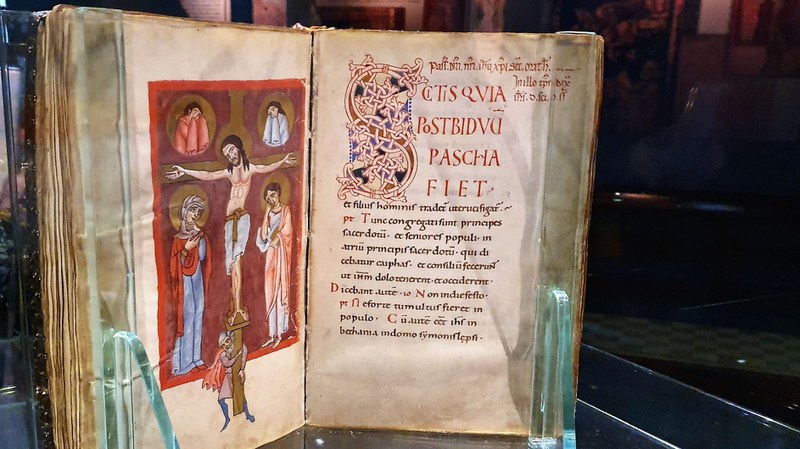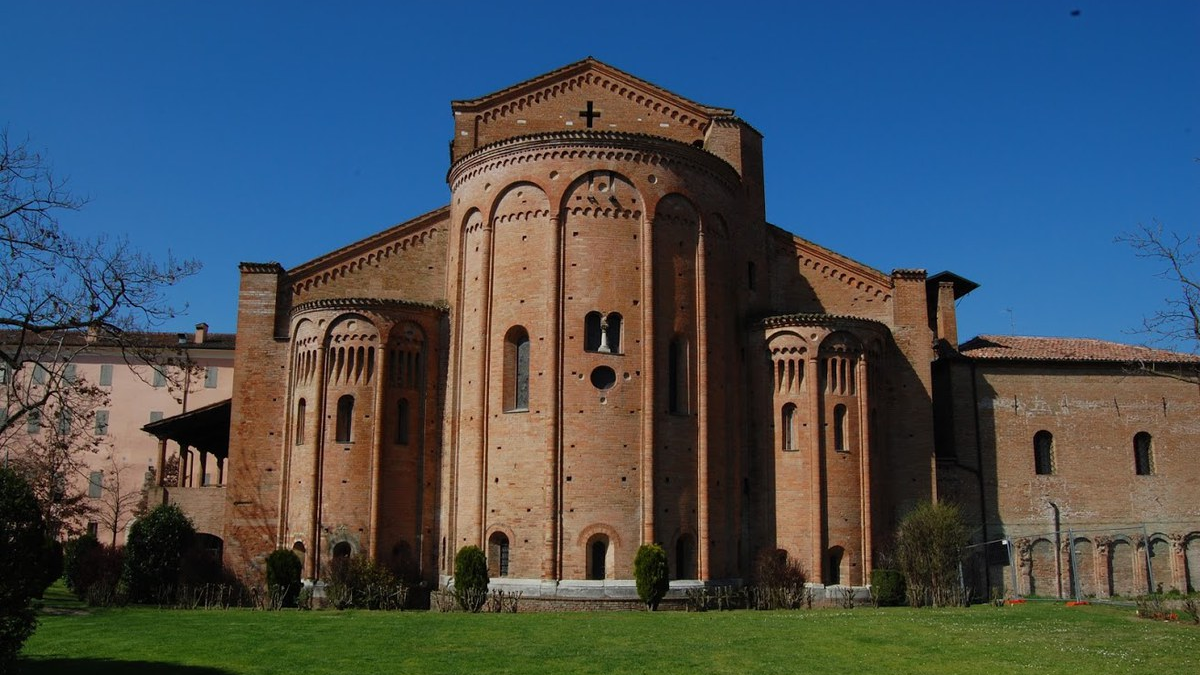Day 2 - Carpi, Sorbara and Nonantola
Located throughout the Province, many factories, welcome visitors to watch master cheesemakers as they perform the ancient rituals of transforming milk into cheese. A tour of a Parmigiano-Reggiano factory is a great way to sample the inimitable aromas and flavors of this delightful specialty as well as to experience first-hand how one of Italy’s most important products is born.
The morning continues in Carpi, “the pearl of the Renaissance” and the ancient seigneury of the Pio family. One of Italy’s largest and most beautiful piazzas is located here: Piazza dei Martiri. The Cathedral of Saint Mary of the Assumption (Santa Maria Assunta) faces Piazza dei Martiri from the north, and the Portico Lungo, an arcade with fifty-two spectacular arches, runs along one edge of the piazza. Across from the arcade is the Palazzo dei Pio complex with a 17th-century clock tower at its center. The Teatro Comunale is next to the Palazzo dei Pio.
After a morning spent savoring the perfume of milk and cheese and taking in the magnificence of a noble palazzo, indulge in a delectable lunch that includes local specialty dishes. In addition to those already mentioned, you can find such other local products here as Emilia-Romagna PGI (protected geographical indication) pears, rice, squash, and mostarda fina (candied fruit in a mustard-flavored syrup) from Carpi. You’ll have no trouble finding a welcoming place to enjoy your meal.
From Carpi we move on to the northern part of Modena Province (commonly called “Bassa” or “Lower” Modena because the area is largely below sea level) to learn how Lambrusco is made, the local sparkling wine known for its intense ruby-red color: the Lambrusco. Rather than talk about Lambrusco, though, we should talk about Lambruscos, plural. There are, in fact, four different varieties: Sorbara, Salamino di Santa Croce, Modena, and Grasparossa di Castelvetro.
The tour continues toward our final stop, Nonantola, for a visit to a second Romanesque-style complex of great significant: Nonantola Abbey
The Benedictine monk Anselm, brother-in-law of the Lombard King Astolfo, founded the Abbey in 752. Anselm brought his monks here to establish a monastery, and the Abbey was later dedicated to Pope St. Sylvester I (San Silvestro).
Next to the cathedral is the Palace of the Abbey, which houses the Abbey’s Archive and Library and the Benedictine and Diocesan Museum of Sacred Art.
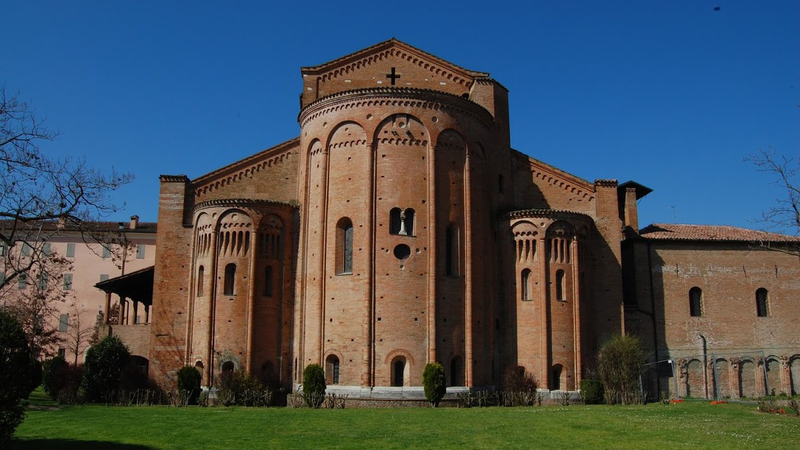
First stop: Palazzo Pio - Carpi
From the courtyard, walk to the main floor, where the Municipal Museum and the Palazzo Pio Museum are located. The museum’s collections include important exhibits that illuminate the area’s history and art.
The Museum and Monument to Political and Racial Deportees is on the ground floor, a moving memorial to the tragic events of WWII. In 1944, the Nazis transformed the camp at Fossoli, a village near Carpi, into a “police and transit camp for political and racial deportees.” From that moment on, convoys left Fossoli destined for the most notorious extermination camps of northern Europe.
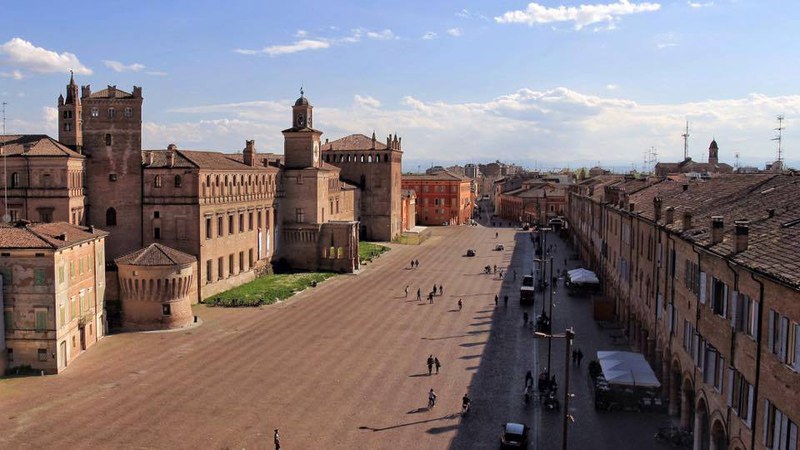
Second stop: Sorbara and the Lambrusco wine
According to legend, Henry IV’s soldiers faced Matilde di Canossa’s troops here and were defeated—not in battle, but because of Lambrusco, so appreciated by Henry’s men that they were literally “knocked to their feet.” There is generally an admission charge for winery tours, which include a tasting. The experience is highly recommended!
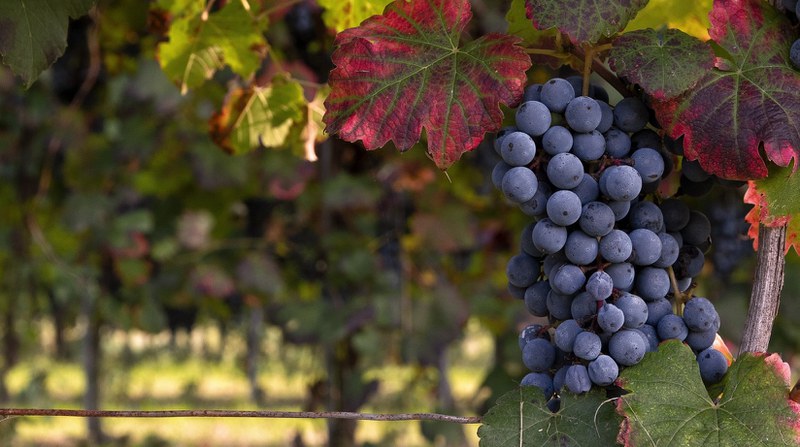
Third stop: Nonantola
The Museum’s exhibits are divided into rooms that display works of art from churches in the Archdiocese of Modena-Nonantola; parchments touched by famous emperors, popes, or other historical figures (including Charlemagne, Frederick I, Holy Roman Emperor, Otto I, Matilde of Canossa, and Pope Julius II); invaluable religious and historical artefacts; reliquaries, illuminate books and manuscripts; and paintings that belong to the Abbey.
